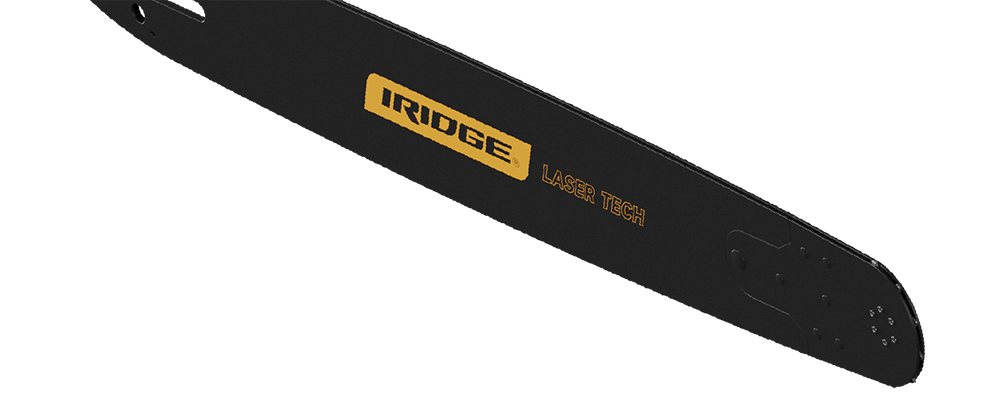What is the Chainsaw Guide Bar? What Does It Do?
The chainsaw guide bar is one of the most important components of a chainsaw. It’s the long, flat metal bar around which the saw chain rotates. While the engine or motor powers the tool and the chain does the cutting, the guide bar is what keeps the chain moving in a straight, controlled path, allowing for effective and safe cutting. Despite its simple appearance, the guide bar plays a crucial role in the performance, safety, and durability of the chainsaw.
What Exactly Is a Guide Bar?
A chainsaw guide bar is a solid, usually steel-made bar that provides a stable track for the chain to rotate on. One end is mounted to the body of the chainsaw, where it connects to the drive system. The bar features a groove around its outer edge, which holds the drive links of the chain in place. At the tip of the bar is often a sprocket, which helps guide the chain smoothly around the bar's end.
Guide bars come in various lengths, types, and designs, depending on the intended use—ranging from small bars for pruning to long bars for professional logging.
What Does the Guide Bar Actually Do?
The guide bar performs multiple essential functions:
1. Guiding the Chain
As the name suggests, the guide bar is what guides the chainsaw chain during cutting. It ensures that the chain moves in a consistent circular motion, allowing for smooth and accurate cuts. Without a guide bar, the chain would be uncontrollable and dangerous.
2. Supporting the Cutting Mechanism
The guide bar supports the cutting force applied by the user. When you push the chainsaw into a tree or branch, the bar acts as a stable platform that supports the chain under pressure. It maintains rigidity so that the chain doesn’t wobble or bend during operation.
3. Controlling Cutting Depth and Angle
The length and design of the guide bar determine how deep and wide a cut can be. Longer bars can cut through thicker logs in a single pass, while shorter bars offer more control for precision tasks. The bar also helps control the cutting angle, especially in professional and arborist applications.
4. Providing Cooling and Lubrication Channels
Modern guide bars are designed with oil holes and grooves to allow bar and chain oil to flow evenly along the bar. This lubrication is vital to reduce friction and heat build-up, preventing wear and extending the life of both the bar and the chain.

Types of Chainsaw Guide Bars
There are different types of guide bars, each suited for specific applications:
Solid Bars: Made from a single piece of steel, these are extremely durable and used for heavy-duty cutting like logging or milling.
Laminated Bars: Made by bonding several layers together, they are lighter and suitable for general-purpose use.
Carving Bars: Designed for fine detail work, often used by chainsaw artists or in tree trimming.
Additionally, bars can vary in tip type:
Sprocket Nose: Contains a small sprocket at the tip to reduce friction and help the chain move smoothly.
Hard Nose: No sprocket, solid steel tip; more durable but less efficient due to increased friction.
Why Is the Guide Bar Important?
Without a properly functioning guide bar, the chainsaw would not be able to cut effectively or safely. A damaged or poorly fitted guide bar can cause chain slippage, uneven cuts, overheating, or even dangerous kickback events. The bar’s alignment and condition directly affect performance and user safety.
Maintenance of the Guide Bar
To keep a guide bar in good condition, regular maintenance is required:
Clean the bar groove to remove sawdust and debris.
Check for burrs or warping, which can cause chain misalignment.
Inspect the oiling system to ensure proper lubrication.
Rotate the bar occasionally to promote even wear on both sides.
Check the sprocket tip (if present) for smooth rotation.
A well-maintained guide bar helps extend the lifespan of both the bar and the chain, reducing downtime and repair costs.
The chainsaw guide bar may look simple, but it plays a vital role in how a chainsaw operates. It serves as the track, support, and control system for the cutting chain, allowing the saw to perform safe, accurate, and efficient cuts. Understanding how it works and keeping it in good condition is essential for anyone using a chainsaw—whether for casual yard work or professional forestry. Always choose the right guide bar for the job and take the time to care for it properly.




